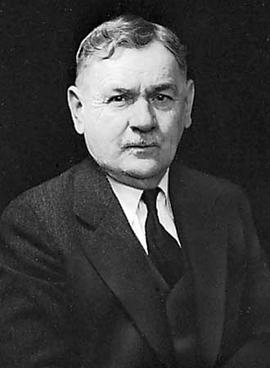Related Research Articles

Folklore is the body of expressive culture shared by a particular group of people, culture or subculture. This includes oral traditions such as tales, myths, legends, proverbs, poems, jokes, and other oral traditions. This also includes material culture, such as traditional building styles common to the group. Folklore also encompasses customary lore, taking actions for folk beliefs, and the forms and rituals of celebrations such as Christmas, weddings, folk dances, and initiation rites.
A meme is an idea, behavior, or style that spreads by means of imitation from person to person within a culture and often carries symbolic meaning representing a particular phenomenon or theme. A meme acts as a unit for carrying cultural ideas, symbols, or practices, that can be transmitted from one mind to another through writing, speech, gestures, rituals, or other imitable phenomena with a mimicked theme. Supporters of the concept regard memes as cultural analogues to genes in that they self-replicate, mutate, and respond to selective pressures. In popular language, a meme may refer to an Internet meme, typically an image, that is remixed, copied, and circulated in a shared cultural experience online.
Memetics is a theory of the evolution of culture based on Darwinian principles with the meme as the unit of culture. The term "meme" was coined by biologist Richard Dawkins in his 1976 book The Selfish Gene, to illustrate the principle that he later called "Universal Darwinism". All evolutionary processes depend on information being copied, varied, and selected, a process also known as variation with selective retention. The information that is copied is called the replicator, and genes are the replicator for biological evolution. Dawkins proposed that the same process drives cultural evolution, and he called this second replicator the "meme". He gave as examples, tunes, catchphrases, fashions, and technologies. Like genes, memes are selfish replicators and have causal efficacy; in other words, their properties influence their chances of being copied and passed on. Some succeed because they are valuable or useful to their human hosts while others are more like viruses.
Anthropology of religion is the study of religion in relation to other social institutions, and the comparison of religious beliefs and practices across cultures. The anthropology of religion, as a field, overlaps with but is distinct from the field of Religious Studies. The history of anthropology of religion is a history of striving to understand how other people view and navigate the world. This history involves deciding what religion is, what it does, and how it functions. Today, one of the main concerns of anthropologists of religion is defining religion, which is a theoretical undertaking in and of itself. Scholars such as Edward Tylor, Emile Durkheim, E.E. Evans Pritchard, Mary Douglas, Victor Turner, Clifford Geertz, and Talal Asad have all grappled with defining and characterizing religion anthropologically.

Clark David Wissler was an American anthropologist, ethnologist, and archaeologist.

Material culture is the aspect of culture manifested by the physical objects and architecture of a society. The term is primarily used in archaeology and anthropology, but is also of interest to sociology, geography and history. The field considers artifacts in relation to their specific cultural and historic contexts, communities and belief systems. It includes the usage, consumption, creation and trade of objects as well as the behaviors, norms and rituals that the objects create or take part in.
Memetic engineering, also meme engineering, is a term developed by Leveious Rolando, John Sokol, and Gibron Burchett based on Richard Dawkins' theory of memes.

The sociology of culture, and the related cultural sociology, concerns the systematic analysis of culture, usually understood as the ensemble of symbolic codes used by a member of a society, as it is manifested in the society. For Georg Simmel, culture referred to "the cultivation of individuals through the agency of external forms which have been objectified in the course of history". Culture in the sociological field is analyzed as the ways of thinking and describing, acting, and the material objects that together shape a group of people's way of life.
Dual inheritance theory (DIT), also known as gene–culture coevolution or biocultural evolution, was developed in the 1960s through early 1980s to explain how human behavior is a product of two different and interacting evolutionary processes: genetic evolution and cultural evolution. Genes and culture continually interact in a feedback loop: changes in genes can lead to changes in culture which can then influence genetic selection, and vice versa. One of the theory's central claims is that culture evolves partly through a Darwinian selection process, which dual inheritance theorists often describe by analogy to genetic evolution.
Cultural selection theory is the study of cultural change modelled on theories of evolutionary biology. Cultural selection theory has so far never been a separate discipline. However it has been proposed that human culture exhibits key Darwinian evolutionary properties, and "the structure of a science of cultural evolution should share fundamental features with the structure of the science of biological evolution". In addition to Darwin's work the term historically covers a diverse range of theories from both the sciences and the humanities including those of Lamark, politics and economics e.g. Bagehot, anthropology e.g. Edward B. Tylor, literature e.g. Ferdinand Brunetière, evolutionary ethics e.g. Leslie Stephen, sociology e.g. Albert Keller, anthropology e.g. Bronislaw Malinowski, Biosciences e.g. Alex Mesoudi, geography e.g. Richard Ormrod, sociobiology and biodiversity e.g. E.O. Wilson, computer programming e.g. Richard Brodie, and other fields e.g. Neoevolutionism, and Evolutionary archaeology.

Dan Sperber is a French social and cognitive scientist and philosopher. His most influential work has been in the fields of cognitive anthropology, linguistic pragmatics, psychology of reasoning, and philosophy of the social sciences. He has developed: an approach to cultural evolution known as the epidemiology of representations or cultural attraction theory as part of a naturalistic reconceptualization of the social; relevance theory; the argumentative theory of reasoning. Sperber formerly Directeur de Recherche at the Centre National de la Recherche Scientifique is Professor in the Departments of Cognitive Science and of Philosophy at the Central European University in Budapest.
Indeterminacy, in philosophy, can refer both to common scientific and mathematical concepts of uncertainty and their implications and to another kind of indeterminacy deriving from the nature of definition or meaning. It is related to deconstructionism and to Nietzsche's criticism of the Kantian noumenon.

The Meme Machine is a popular science book by Susan Blackmore on the subject of memes. Blackmore attempts to constitute memetics as a science by discussing its empirical and analytic potential, as well as some important problems with memetics. The first half of the book tries to create greater clarity about the definition of the meme as she sees it. The last half of the book consists of a number of possible memetic explanations for such different problems as the origin of language, the origin of the human brain, sexual phenomena, the Internet and the notion of the self. These explanations, in her view, give simpler and clearer explanations than trying to create genetic explanations in these fields.

Culture is a concept that encompasses the social behavior, institutions, and norms found in human societies, as well as the knowledge, beliefs, arts, laws, customs, capabilities, and habits of the individuals in these groups. Culture is often originated from or attributed to a specific region or location.
Ethnoscience has been defined as an attempt "to reconstitute what serves as science for others, their practices of looking after themselves and their bodies, their botanical knowledge, but also their forms of classification, of making connections, etc.".
Epidemiology of representations, or cultural epidemiology, is a theory for explaining cultural phenomena by examining how mental representations get distributed within a population. The theory uses medical epidemiology as its chief analogy, because "...macro-phenomena such as endemic and epidemic diseases are unpacked in terms of patterns of micro-phenomena of individual pathology and inter-individual transmission". Representations transfer via so-called "cognitive causal chains" ; these representations constitute a cultural phenomenon by achieving stability of public production and mental representation within the existing ecology and psychology of a populace, the latter including properties of the human mind. Cultural epidemiologists have emphasized the significance of evolved properties, such as the existence of naïve theories, domain-specific abilities and principles of relevance.
The concept of conscious evolution refers to the theoretical ability of human beings to become conscious participants in the evolution of their cultures, or even of the entirety of human society, based on a relatively recent combination of factors, including increasing awareness of cultural and social patterns, reaction against perceived problems with existing patterns, injustices, inequities, and other factors. The realization that cultural and social evolution can be guided through conscious decisions has been in increasing evidence since approximately the mid-19th century, when the rate of cultural change globally began to increase dramatically. The Industrial Revolution, reactions against the effects of the Industrial Revolution, the emergence of new sciences such as psychology, anthropology, and sociology, the revolution in global communication, the interaction of diverse cultures through transportation and colonization, anti-slavery and suffrage movements, and increasing human lifespan all would contribute to the growing awareness of social and cultural patterns as being potentially subject to conscious evolution.

American anthropology has culture as its central and unifying concept. This most commonly refers to the universal human capacity to classify and encode human experiences symbolically, and to communicate symbolically encoded experiences socially. American anthropology is organized into four fields, each of which plays an important role in research on culture:
- biological anthropology
- linguistic anthropology
- cultural anthropology
- archaeology
Cultural evolution is an evolutionary theory of social change. It follows from the definition of culture as "information capable of affecting individuals' behavior that they acquire from other members of their species through teaching, imitation and other forms of social transmission". Cultural evolution is the change of this information over time.
There are two main approaches currently used to analyze archaeological remains from an evolutionary perspective: evolutionary archaeology and behavioral ecology. The former assumes that cultural change observed in the archaeological record can be best explained by the direct action of natural selection and other Darwinian processes on heritable variation in artifacts and behavior. The latter assumes that cultural and behavioral change results from phenotypic adaptations to varying social and ecological environments.
References
- 1 2 3 4 Robert Aunger (2002). The Electric Meme: A New Theory of How We Think . New York: The Free Press. ISBN 0-7432-0150-7.
- 1 2 Huxley, Julian S. 1955. "Guest Editorial: Evolution, Cultural and Biological." Yearbook of Anthropology, 2–25.
- 1 2 "Topic". maps.unomaha.edu. Retrieved 2021-03-27.
- 1 2 https://www.heritage.nf.ca/nl-studies-2205/chapter-1-topic-1.pdf [ bare URL PDF ]
- 1 2 Boilès, Charles L. (1982). "Processes of Musical Semiosis". Yearbook for Traditional Music. 14: 24–44. doi:10.2307/768069. JSTOR 768069. S2CID 191399003.
- ↑ Hayler, M. (2015-05-07). Challenging the Phenomena of Technology. Springer. ISBN 9781137377869.
- 1 2 Pim, Joám Evans (2009). Toward a Nonkilling Paradigm. Center for Global Nonkilling. p. 260. ISBN 9780982298312.
- ↑ Bribiesca, Luis B. (2001). "Memetics: a dangerous idea". Interciencia. 26 (1): 29–31.
- ↑ Gnoli, Claudio (2018-08-13). "Mentefacts as a missing level in theory of information science". Journal of Documentation. 74 (6): 1226–1242. doi:10.1108/jd-04-2018-0054. ISSN 0022-0418. S2CID 52159757.
- 1 2 Sriraman, Bharath; Goodchild, Simon (2009). Relatively and Philosophically Earnest: Festschrift in honor of Paul Ernest's 65th Birthday. Charlotte, NC: Information Age Publishing. p. 135. ISBN 9781607522416.
- ↑ Bidney, David (1967). Theoretical Anthropology (2nd ed.). New York: Schocken.
- ↑ Ingold, Tim (2016). Evolution and Social Life. Oxon: Routledge. p. 283. ISBN 9781138675858.
- ↑ Uwe V. Riss; Johannes Magenheim; Wolfgang Reinhardt; Tobias Nelkner; Knut Hinkelmann (March 2011). "Added Value of Sociofact Analysis for Business Agility". AAAI Publications, 2011 AAAI Spring Symposium Series. Archived from the original on 24 March 2012. Retrieved 5 August 2011.